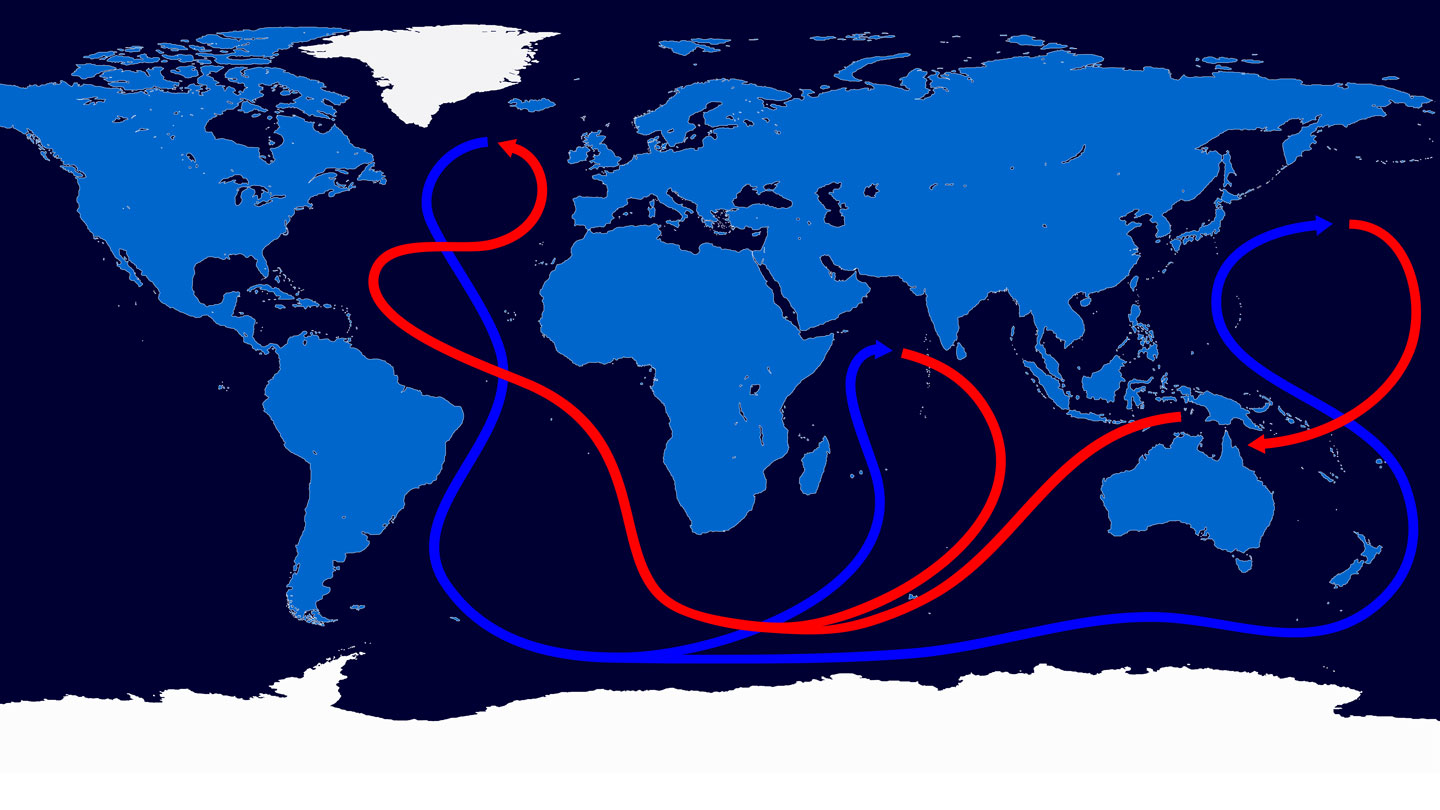The ocean circulation system may not be as bad as previously thought.
A vital oceanic artery known as the Florida Current, a signal of the ocean’s ability to regulate Earth’s climate, has apparently been weakening for decades. But this latest decline may not be as severe as suspected. The current has actually remained stable over the past few decades, researchers report Sept. 5 Nature Communications.
A previously reported decline in flow had fueled speculation that a large system of ocean currents — known for regulating Earth’s climate — may have recently weakened due to human-caused climate change. Some researchers have suggested that the larger system, known as the Atlantic Meridional Overturning Circulation, or AMOC, could collapse sometime this century, dramatically cooling the Northern Hemisphere and raising sea levels along some Atlantic coasts by in 70 centimeters.
“The good news is that the AMOC is slowing less than we thought, and that means there’s still time to avoid a more serious slowdown,” says oceanographer Hali Kilbourne of the University of Maryland Center for Environmental Science in the Solomons. which was not. included in the new study.
But because the re-evaluated records span only a few decades, she says, “there’s still an open question as to whether or not the AMOC has slowed since preindustrial times,” around the mid-1800s.
The AMOC acts as a two-level conveyor belt, circulating heat, salt, and nutrients across the Atlantic Ocean (SN: 1/4/17). The upper level belt carries warm near-surface waters from the tropics into the North Atlantic. There, the water cools and sinks to the bottom of the ocean. It then turns south along the lower level of the belt, warming, rising and repeating the cycle.

In the subtropical North Atlantic, most of the water carried by the upper AMOC comes from the Florida Current, which carries water from the Gulf of Mexico into the Gulf Stream. Since 1982, a submarine telecommunication cable spanning the Florida Straits has been used to monitor the powerful current, providing the longest observational record of any AMOC component.
Seawater contains charged atoms called ions, which flow through the cable and generate a measurable voltage. By calibrating the voltage measurements with direct observations from periodic cruise surveys, scientists can calculate how much water the current is carrying through the cable on any given day.
But this process is not perfect, says oceanographer Denis Volkov of the University of Miami. It has been managed by several generations of scientists, resulting in several data processing changes over the decades. Volkov’s team found that after 2000, there was a failure to calculate the displacement intensity and orientation of the Earth’s magnetic field (SN: 23.11.15).
After correcting for geomagnetic shifts, the data show that in each decade since 2000, the flow rate of the Florida Current has dropped by about 100,000 cubic meters per second. This is roughly a quarter of the previously reported decline, and practically insignificant considering that the current average is about 32 million cubic meters per second.
The correction also reduced estimates of a recent decline in the AMOC by about 40 percent. Every decade since 2000, the AMOC’s flow rate has decreased by about 800,000 cubic meters per second, while moving an average of about 17 million cubic meters every second. While that’s still a decline, it’s barely significant, Volkov says, adding that it’s not yet possible to say whether the decline is a result of climate change or a natural fluctuation.
The main point is that the recent behavior of the Florida Current does not indicate that the AMOC is slowing due to climate change. Or the observational record is too short to detect such a decline.
“This is a great example of how with any scientific enterprise, we always have to revise our data, our assumptions and our current dogma as new information comes to light,” says Kilbourne.
But most of the work showing a decline in the AMOC since preindustrial times uses coarse paleoclimate data, including deep-sea sediment grain sizes and coral compositions, that span thousands of years. The revised data are still too short to change our understanding of the long-term evolution of the AMOC, says Kilbourne.
It’s important to keep making these observations because they could eventually help show how climate change is affecting the AMOC, says oceanographer Sophia Hines of the Woods Hole Oceanographic Institution in Falmouth, Mass. “It’s all important, just different pieces of the puzzle.”
#vital #oceanic #current #steady
Image Source : www.sciencenews.org